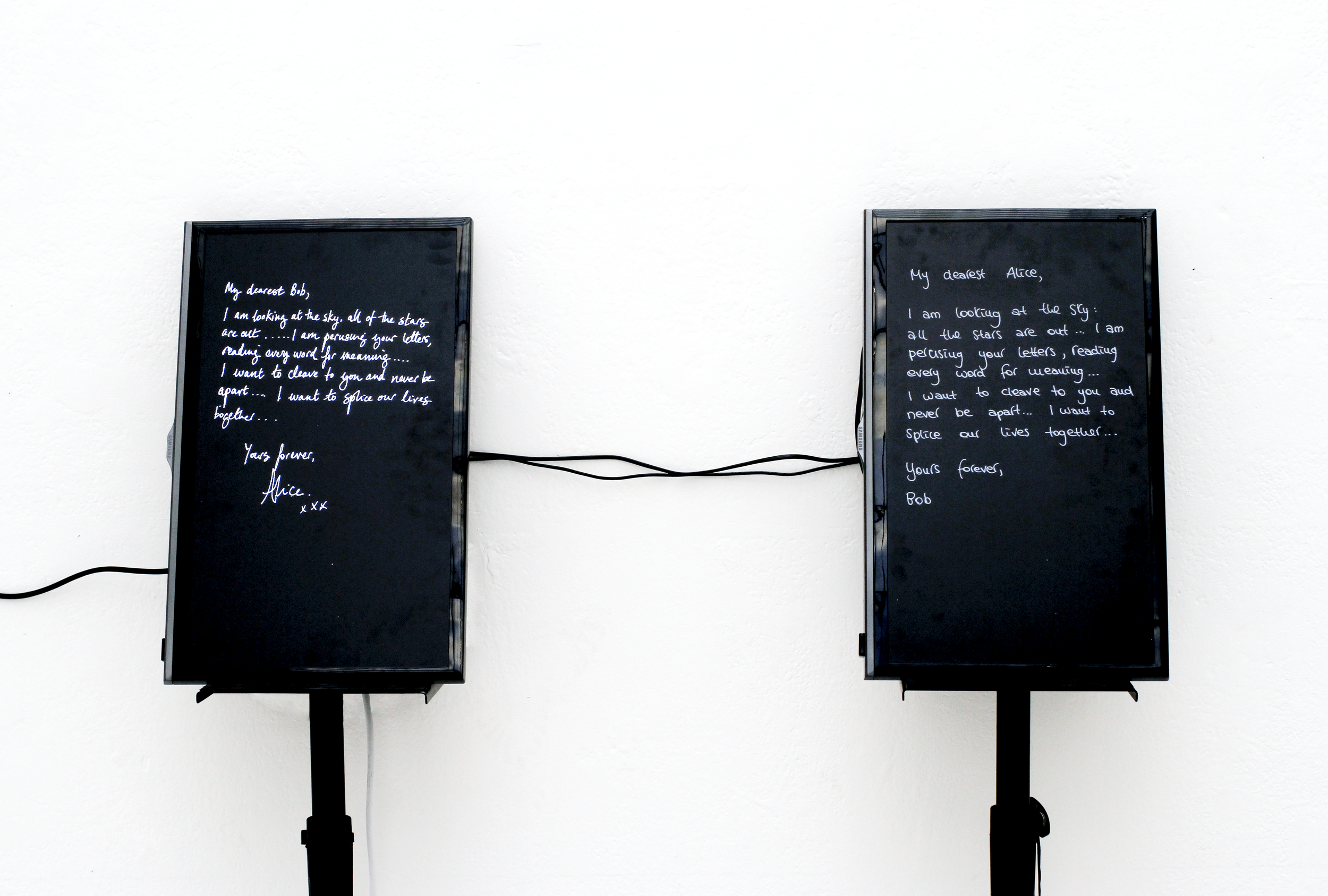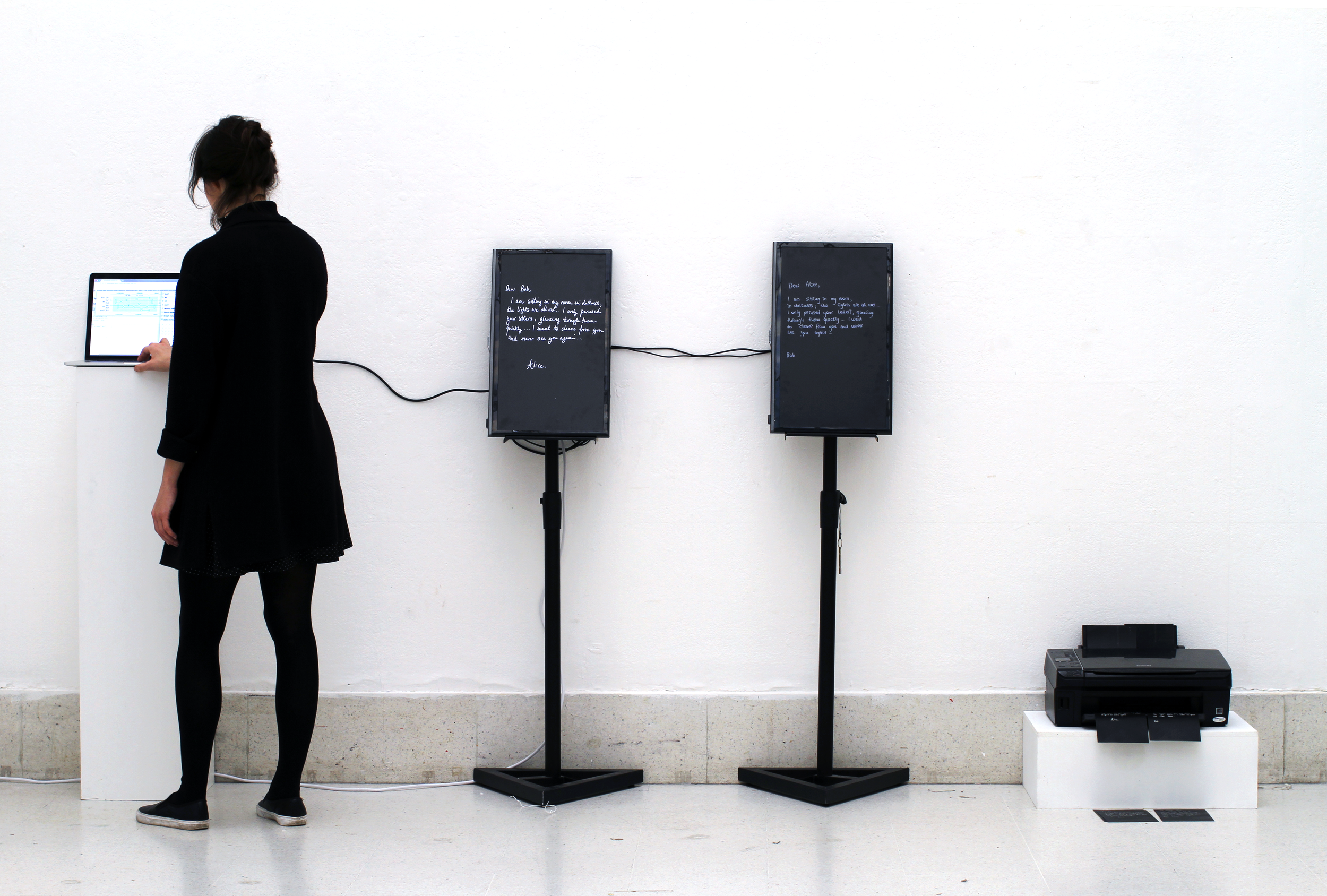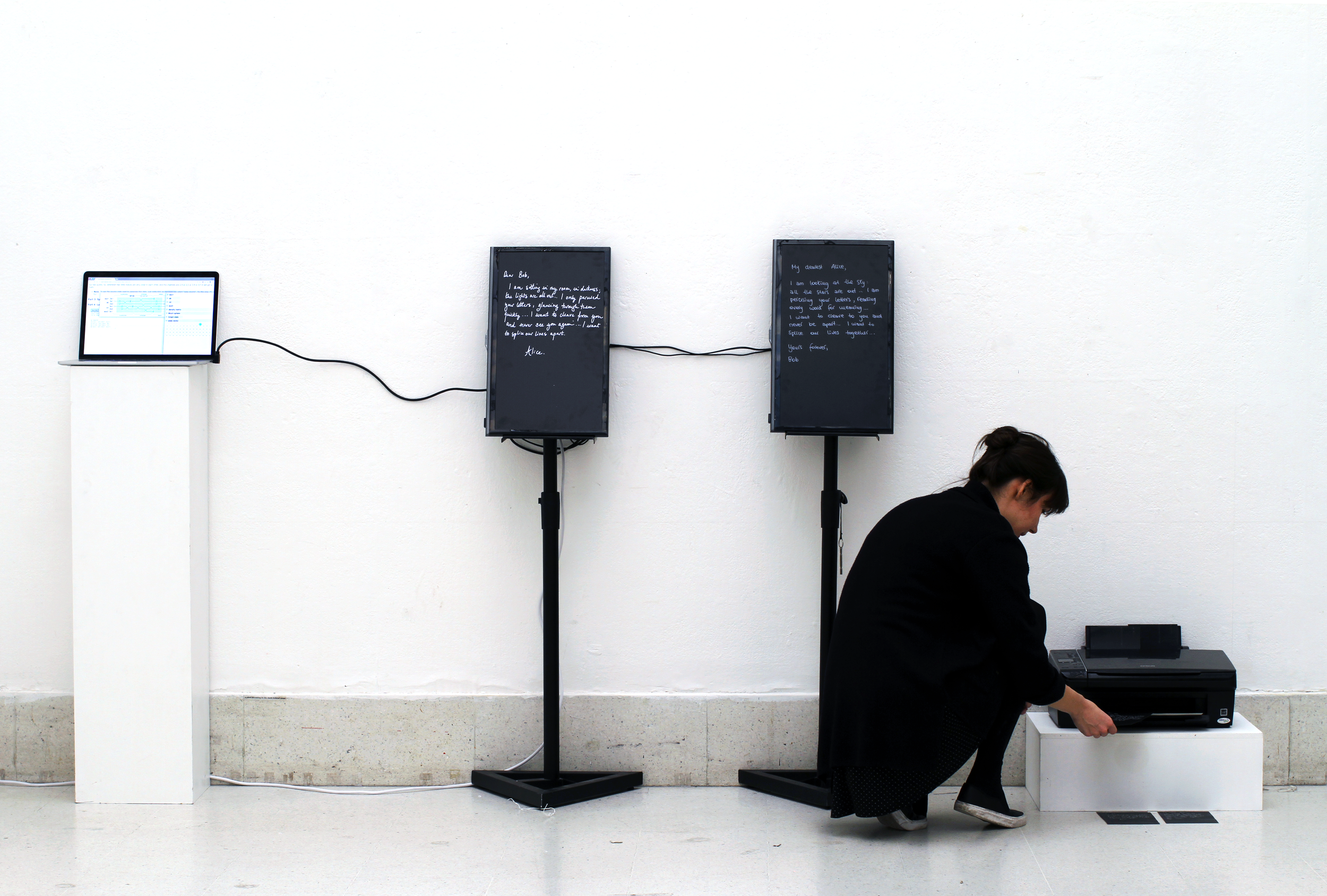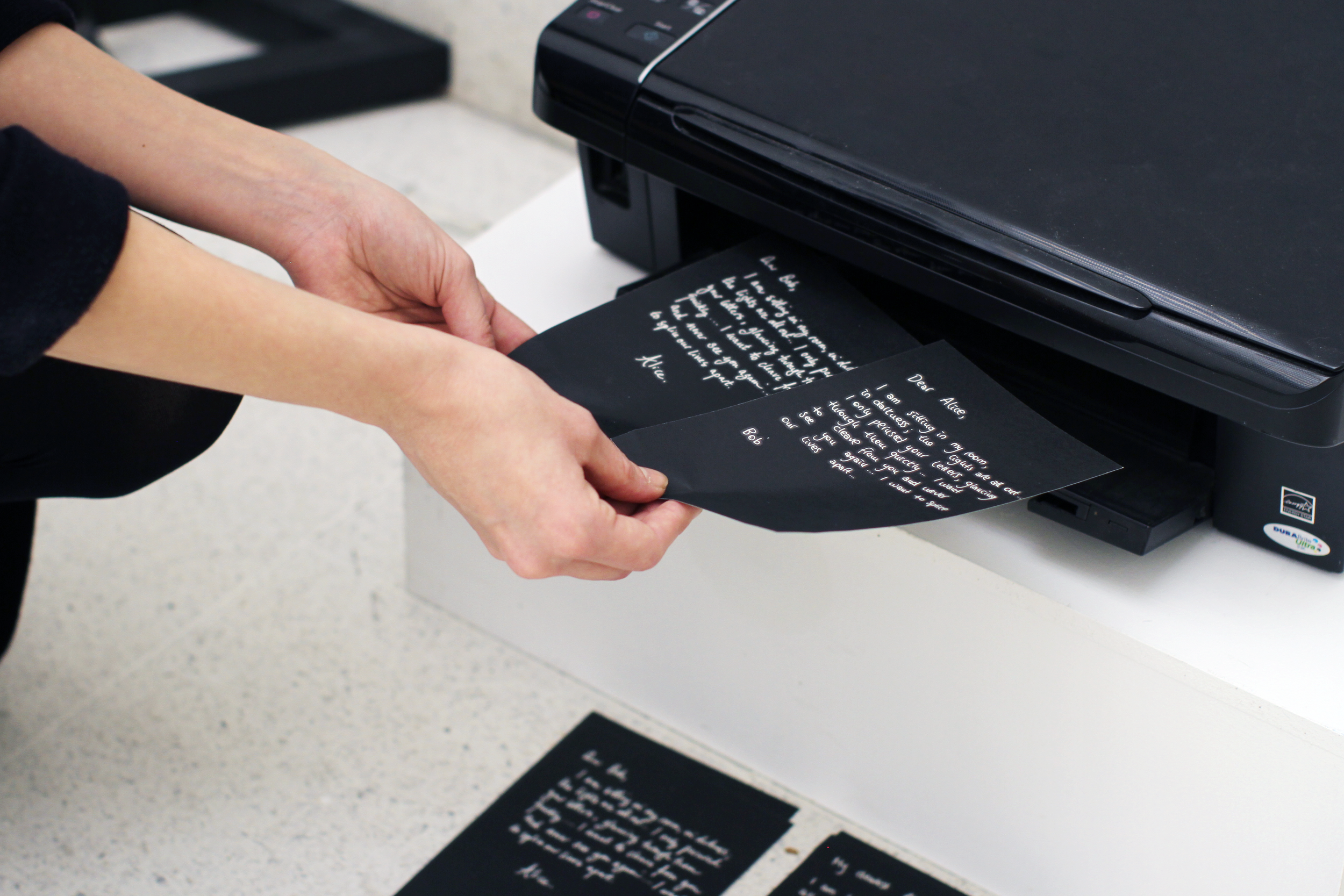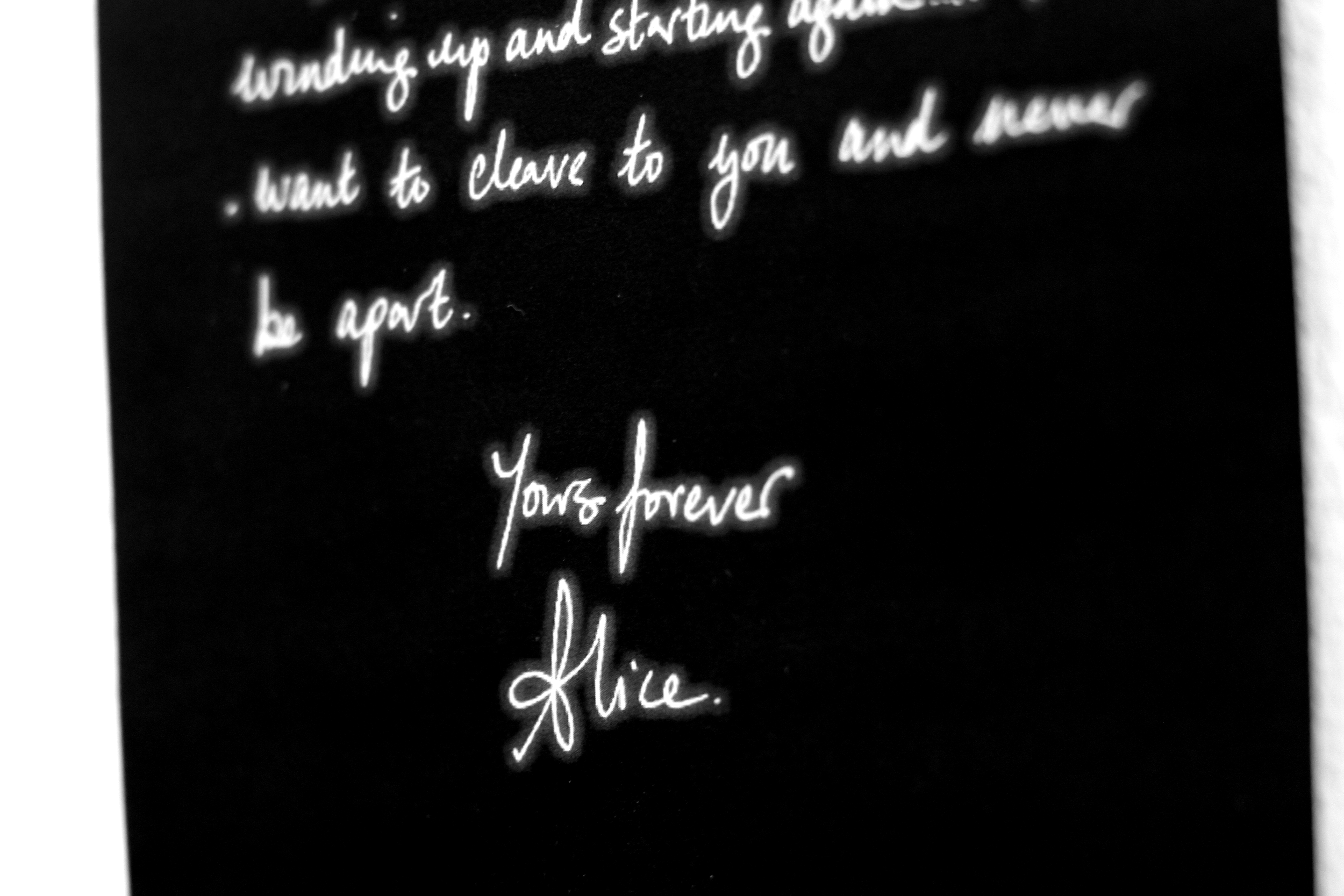Alice and Bob (2017) is an installation of perpetually evolving love letters composed and controlled by the measurement data of a four-qubit quantum computer. Excerpts and titles of quantum science papers are processed and subsequently woven into a series of what appears to be handwritten, intimate letters shared between the fictitious characters of Alice and Bob, complicated by sporadic mentions of a third character, Eve. The recontextualization of sterile algorithmic data within a love story reveals the poetics and unexpected connections shared between science, literature and art. Over the course of three acts, storylines between Alice and Bob entangle similar to the photons within a quantum device.
Exhibited at the Ming Contemporary Art Museum, Shanghai, China (2019); and Today Art Museum, Beijing, China (2019).
………For us, the language that quantum physicists use to describe the quantum phenomenon of entanglement—fidelity, monogamy, entangling—is similar to the language used in romance novels. The evocative and emotional descriptions by the scientists to describe how their experiments work felt in sharp contrast to the way that we had previously experienced descriptions of quantum physics. Francis Ponge's “The Augean Stables” describes how the same language is used by poets as it is by politicians and business: “because we have no other words at our disposal” and we certainly found that the same language is used both to describe tightly-controlled experimental physics and the act of falling in and out of love.
There is a tradition in fine art of repurposing, without it being seen as plagiarism. But in science—and literature—the act of taking someone else’s words or ideas without attribution is more problematic. Marjorie Perloff has coined the term “unoriginal genius” to talk about the trend in literature of “moving information” rather than creating something entirely original, and “conceptualising, constructing, executing, and maintaining a writing machine”. This is a not a new notion of writing: examples include NourbeSe Philip’s “Zong!”—an 18th century British court case where 150 slaves were thrown overboard so the captain could collect the insurance money, which uses words found in the original one-page legal document. There is emotion, but emotion delivered obliquely: “moments of unanticipated beauty—some grammatical, others structural, many philosophical: the wonderful rhythms of repetition, the spectacle of the mundane reframed as literature, a reorientation to the poetics of time, and fresh perspectives on readerliness.” And this is what we have tried to achieve with the letters of Alice and Bob.
More than a simple visualisation of a scientific experiment, Alice & Bob is a poetic contemplation on modes of communication and language development. There are a number of storylines that can occur, but many more ways of telling these stories. As the letters are being transcribed on the screen, or read in a book, words show up without context, allowing us to explore the different possible states before the meaning, and decision, is collapsed into one……….
Part of the text for the catalogue of the exhibition Spheres of Influence, explaining some of the background on Alice and Bob
